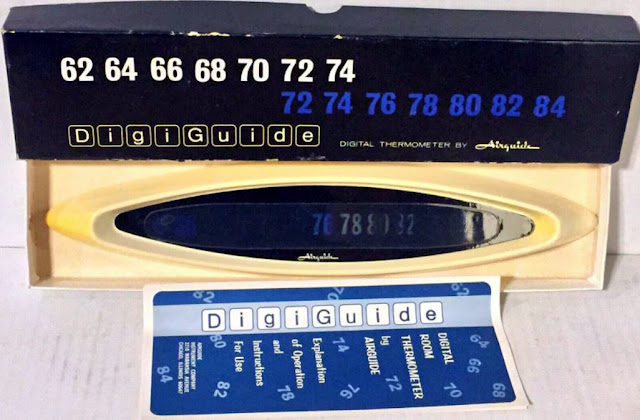.jpg)
Established inauspiciously at the outset of the Great Depression, the Airguide Instrument Company—originally known as Fee & Stemwedel, Inc.—managed a 60-year run as one of the country’s leading producers of “weather instruments,” i.e. thermometers, barometers, rain gauges, hygrometers and other instruments such as speedometers, tachometers, and the like. (Didn't Ed Roth's cars have Airguide guages?)
Electrical engineers Albert L. Stemwedel (b. 1904) and Richard L. Fee (b. 1900) were part of the same generation of young entrepreneurs who’d launched radio giants like Zenith, Motorola, and Admiral.
Fee spent the ‘20s (which were also his 20s) working as an electrician in Waukegan, while Stemwedel—a graduate of the Armour Institute of Technology—was an electrical contractor living in Rogers Park.
they hired Howard Taylor, who’d recently been laid off by Western Electric because of the Wall St crash and great depression, as a service man for them, as he had an inquiring mind and a lot of practical know-how.
At the height of its popularity, the Airguide brand name was associated not only with weather measuring devices like this one, but a slightly broader line of products one might categorize as “scouts equipment.” Advertisements in Boy’s Life and Popular Mechanics during the ‘40s and ‘50s showcased a healthy assortment of Airguide compasses, telescopes, and binoculars

.jpg)
1947 advertising
1948
Makes a lot of sense to make opera glasses, binocs, and spy glasses at the same time
not only did they make a compass for snowmobiles, they made an altimeter. Yes, for snowmobiles
I grew up in snowmobile country, never saw any with an altimeter, and frankly? Have no god damn idea why the hell a snowmobile needs an altimeter. A flare gun? Yes. A winch? Absolutely. Extra gas tank? Are you kidding? Of COURSE they need an extra gas tank. But an altimeter?
1957
they were so compass crazy, they even put a compass on a hand grip
then used that hand grip for their wind speed indicator
this nice condo building at the intersection of Winnebago and Wabansia in Chicago is their old factory
I hope you've enjoyed this look at the variety of things they made, and aren't you glad neither of us are collectors of every neat thing we see?
































.jpg)

.jpg)
.jpg)


.jpg)

.jpg)
.jpg)
.jpg)

.jpg)

.jpg)



.jpg)

.jpg)
.jpg)

.jpg)






.jpg)

.jpg)


.jpg)
.jpg)
.jpg)
.jpg)



.jpg)


.jpg)
.jpg)
